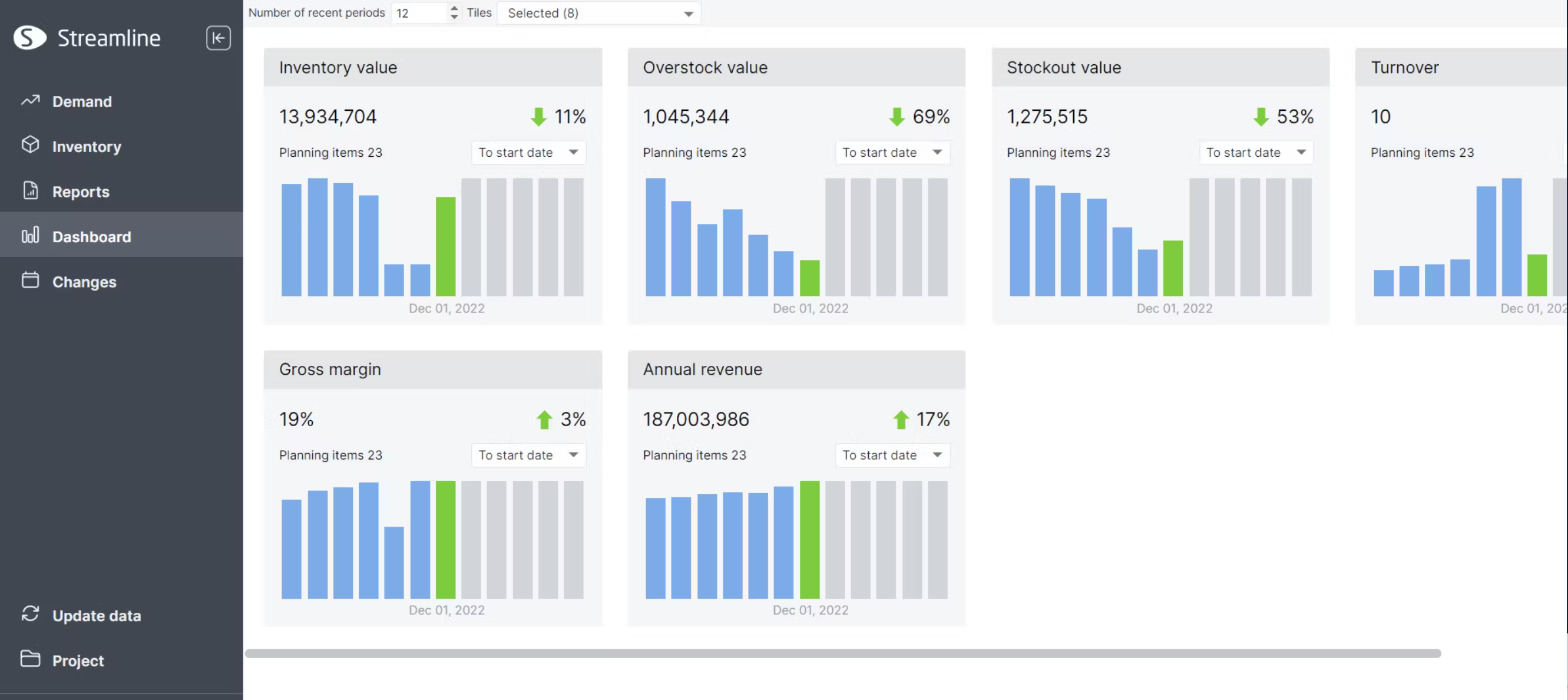Schedule live demo

Streamline is a comprehensive Supply Chain Management platform, which has modules for demand forecasting, collaboration between teams, inventory management, MRP and integrations with the main ERPs, with implementation times of 2 to 6 months and an ROI of approximately 6 months.
Datup is a Supply Chain Analytics platform with AI that optimizes demand and inventory planning. It combines forecasts of up to 95% accuracy, intelligent inventory automation, collaborative tools for S&OP, conversational assistant and a quick ROI of 3 to 6 months, all in an easy and agile solution to use.

Streamline it has a demand forecasting product that makes accurate predictions with advanced models for multiple levels (SKU, Location, Category level), in addition to detecting seasonalities and anomalies.
Datup It has the module specialized in demand planning which generates multiple forecasting scenarios driven by AI and Machine Learning models, with up to 95% accuracy, considering +200 external variables, integrating with different sources of ERP, WMS, CRM, TMS or whatever your business needs.
One of the main attractions of Streamline is Integrated Business Planning (IBP). This connects demand forecasting, inventory optimization and supply chain management for comprehensive decision-making.
On the other hand, Datup throughout its different modules (Portfolio Classification, Demand planning, Inventory Management And Optimizing distribution) unifies supply chain decisions from start to finish, connecting planning with inventories, operations, sales and finance. Free up trapped capital and raise service levels with intelligent suggestions based on your real-time operation.
Streamline S&OP with AI it connects sales and operations planning. It helps sales, operations and finance to collaborate effectively, synchronize their goals and optimize the use of resources. The platform offers analytics that support better decisions, all from a simple and accessible interface.
Datup It has a panel dedicated exclusively to the S&OP process, where from a single source of truth, all the teams involved can participate in demand planning and sales estimation, avoiding silos and strengthening information for joint decision-making.
Streamline for inventory planning provides detailed inventory visibility by product, channel and location. It reduces shortages and improves turnover through advanced predictions. Calculate configurable security stock (statistical or cumulative demand) with options for distribution centers. It allows you to simulate scenarios, manage inventory in transit and automate orders, but it doesn't automatically differentiate service levels by SKU.
Datup has an inventory optimization module that offers real-time monitoring of bankruptcies and excess stock, making intelligent suggestions based on demand forecasting to prevent them.
The platform suggests when and how much to reorder considering supplier lead times and each company's business policies. For multi-location operations, it recommends optimal inventory distribution to reduce warehousing costs and free up capital.
In addition, it dynamically calculates the security stock differentiated by each SKU and allows you to define personalized inventory strategies according to margin, turnover and product criticism.
We identify the most efficient type of integration for your operation (API, Data Warehouse or files) and connect directly to your system or other key sources.
We extract data from your system, structure it according to your operation, and train our AI models to deliver accurate and actionable recommendations.
We provide you with ready-to-use dashboards, with clear and actionable information. We validate with your team that the recommendations fit the operational reality and fine-tune the last details.